We initially got our hands on the SENA 60S just before EICMA 2024, but it came with a pre-production software version that had some limitations. So, we decided to postpone our test until the start of the 2025 riding season. Now, after several weeks of intensive use between Barcelona and Vienna, we're ready to share our findings. The new 60S has its shining moments, although there are some shadows as well. But let's take it step by step...

SENA 60S Review: The Latest Helmet Communication System Test
Highlights and Drawbacks of SENA's New Flagship
The 60S is SENA's new flagship in helmet communication systems, promising to outperform the 50S in every aspect. It boasts revolutionary features, including communication with unlimited range. We've put the SENA 60S to the test to see if it lives up to these bold claims in real-world riding.
&width=72&height=72&bgcolor=rgba_39_42_44_0&mode=crop)
Gregor
published on 22/04/2025
Easy Installation and Versatile Use – Testing the Smart Hardware of the SENA 60S
We start with the installation of the 60S, just like most customers probably would. Like many modern communication systems, the mount can be attached using adhesive pads on the outside of the helmet or fixed with a clamp to the helmet shell. While the adhesive option is compatible with almost any helmet, the suitability of the clamp depends on whether the helmet's interior and shell are glued together and the width of the lower helmet edge. A common practice, but SENA takes it a step further with the 60S.
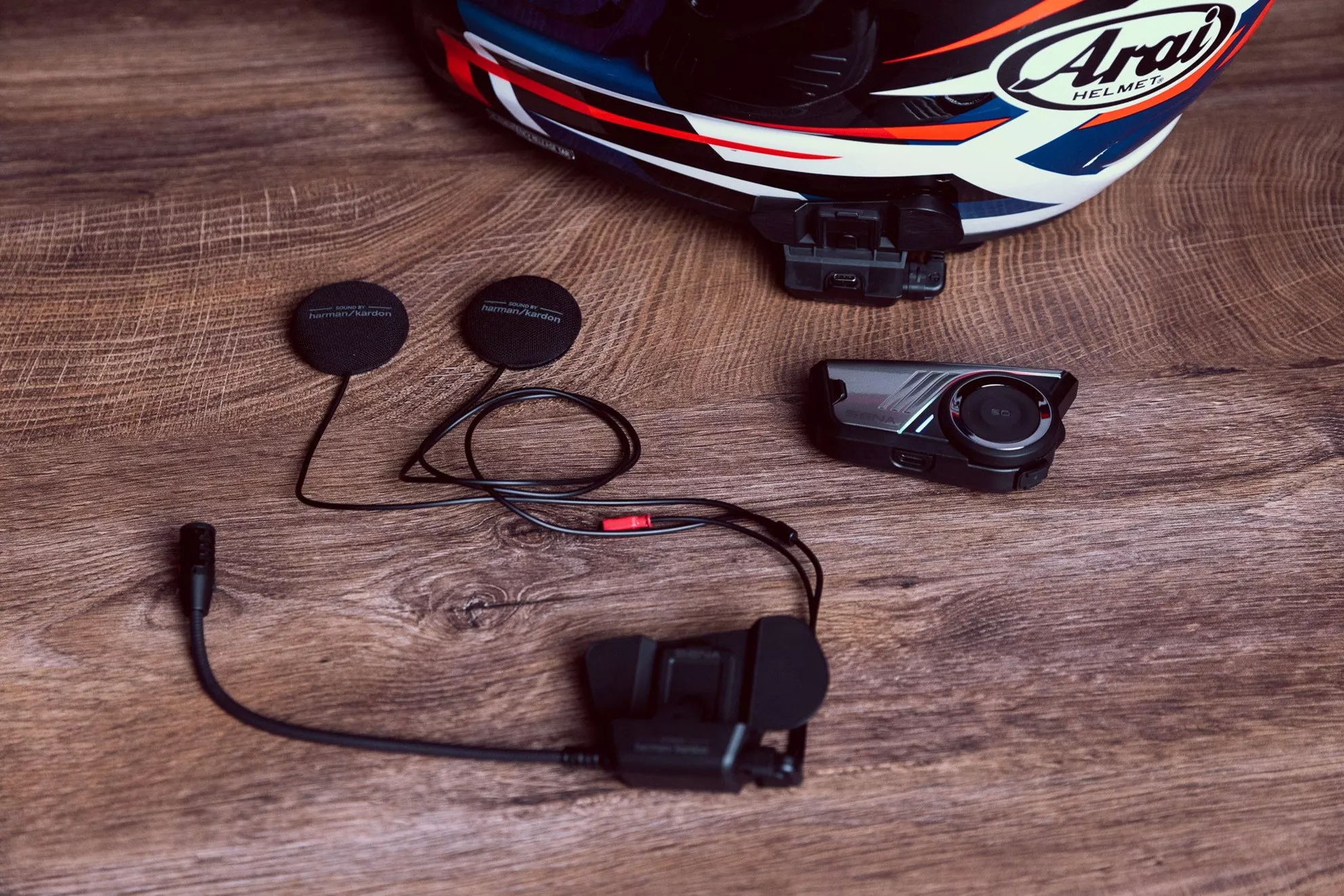
Each SENA 60S comes with two mounts: one with a boom microphone and another with a wired microphone.
A standout feature is that the package includes two different helmet mounts. One mount comes with a fixed boom microphone, making it ideal for jet and other open helmets. The second uses a modular system: the microphone and speakers connect via USB-C and are mounted directly inside the helmet, perfect for full-face or modular helmets. This offers real value, especially for riders who frequently switch between different helmets. The highlight: the 60S can be quickly transferred from one mount to another thanks to a new magnetic latch—just a quick move, and the communication system is securely attached to the new helmet. This feature saves time and significantly increases everyday convenience.
Operation and Feel of the SENA 60S – Familiar Approach with Minor Flaws
Sena sticks to its guns with the 60S's control layout, using the well-established interface: a large jog dial for adjusting volume or skipping tracks, plus three additional buttons—one for intercom functions (mainly Mesh), one for smartphone connectivity, and one for special functions. If you've used a SENA system like the 50S before, you'll feel right at home. Others might need a quick orientation, but basic functions like music control, call handling, and toggling the Mesh intercom are easily mastered. The only truly new button is for the flashlight, now included for the first time on the 60S. While this feature can be handy in the dark, I found myself rarely using it in everyday situations.
In practice, the controls work reliably. The buttons are easy to feel, even with thick gloves on. The tactile feedback is solid, and everything feels high-quality and robust—it all fits well. However, it's noticeable that more advanced functions are hardly manageable directly via the device's buttons. It quickly becomes clear that the full use of the 60S is really intended only in combination with the smartphone app—which makes sense for safety reasons. The Sena Motorcycles app is well-organized and easy to operate when stationary. Particularly handy is the ability to connect with other riders using a QR code. This saves time and eliminates the often lengthy setup process of earlier intercom generations.

Anyone already familiar with SENA communication systems will easily navigate the 60S.
An intriguing feature is the voice control, now enhanced with AI support and available in multiple languages. The concept is promising—you can issue simple voice commands to the device itself (e.g., "volume up," "Mesh on") and also interact directly with your smartphone's voice assistant. In testing, this worked surprisingly well at times: without pressing a button, I was able to have Google Assistant calculate a route to Vienna, which is nearly 50 km away.
However, the voice commands aren't always reliable. Sometimes they work instantly, other times nothing happens at all. This makes control on the go a bit unpredictable, which is why I personally often reverted to the classic buttons—simply because they always work. The 60S, therefore, has its highs and lows quite close together.
Visual Customization: The SENA 60S Adapts to Your Helmet Design
Unlike many other communication systems that appear more functional than appealing, the SENA 60S offers surprisingly extensive customization options. The outer case plate is interchangeable and can be swapped out for a version in dark chrome, metallic silver, pearl white, or gloss black, depending on your preference. Additionally, the large jog dial is available in various colors. For those who want to stand out, the integrated LED strip—dubbed RideGlow—can be customized in color and lighting behavior via the app. This allows the communication system to visually match your helmet or riding style without sacrificing functionality. Despite these customization options, allowing you to swap parts independently, the SENA 60S remains IPX7 water and dust-resistant. It handled the nastiest winter rain without issues, unlike the rider.
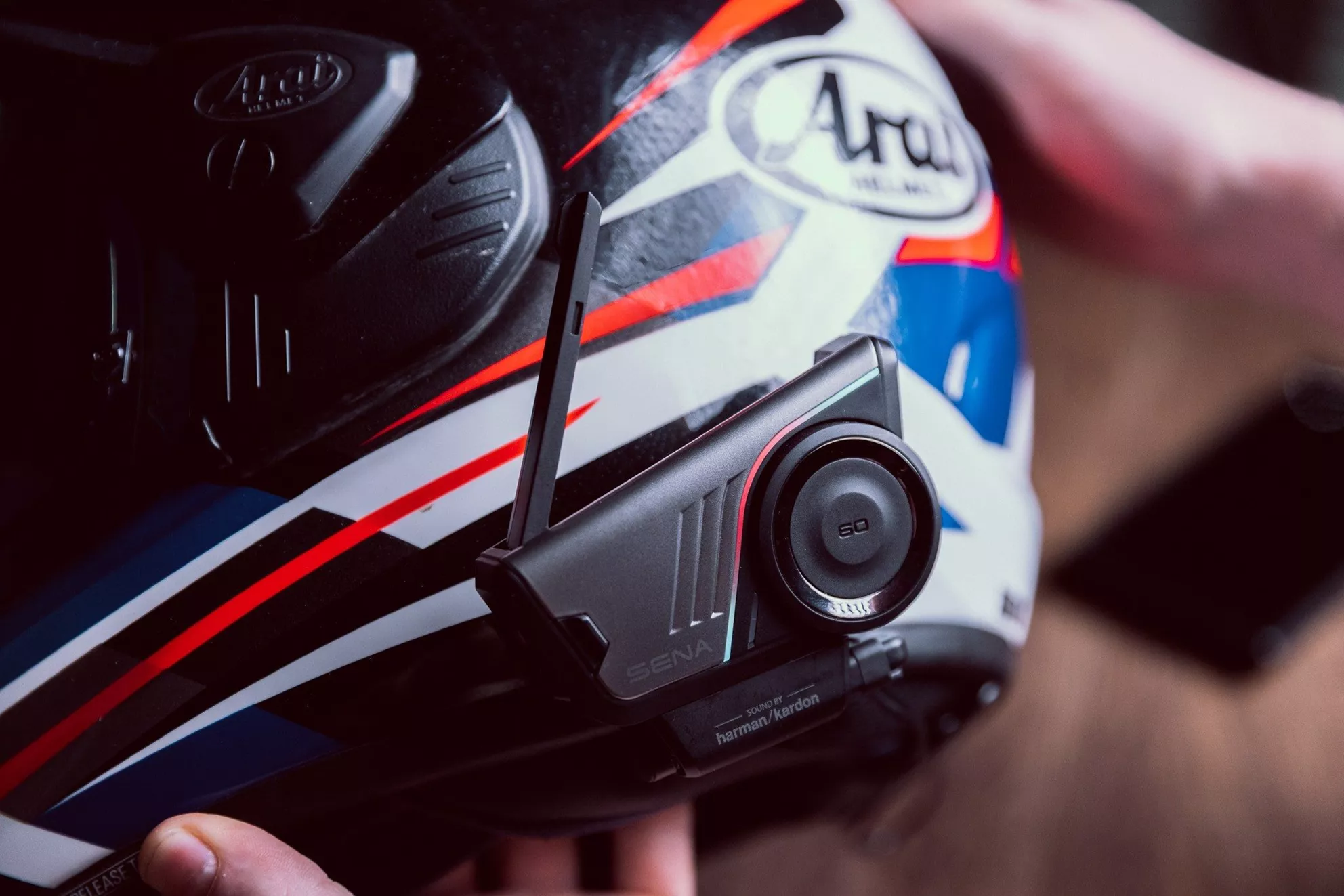
Customization is a key feature of the new SENA 60S. In addition to the interchangeable outer shell components, the LED strip can also change color.
Powerful Sound for Solo Rides – Harman Kardon Speakers in the SENA 60S
When riding solo, you'll likely use your communication system 90% of the time for two things: listening to music and making calls. This is where the new Harman Kardon speakers truly shine. While the previous model, the 50S, was often criticized for being too quiet, the 60S's speakers are 30% louder, providing a noticeable improvement. At maximum volume, they can make your ears vibrate. This allows you to comfortably follow a podcast even with earplugs in and at higher speeds on the highway.

Harman Kardon delivers explosive sound in the SENA 60S, as long as the artificial intelligence doesn't interfere.
The speakers are not only louder but also offer better quality. Even complex music genres like metal are reproduced clearly—a point where many other systems reach their acoustic limits. The sound quality issues only arise when interacting with other riders, but they are not due to the speakers themselves.
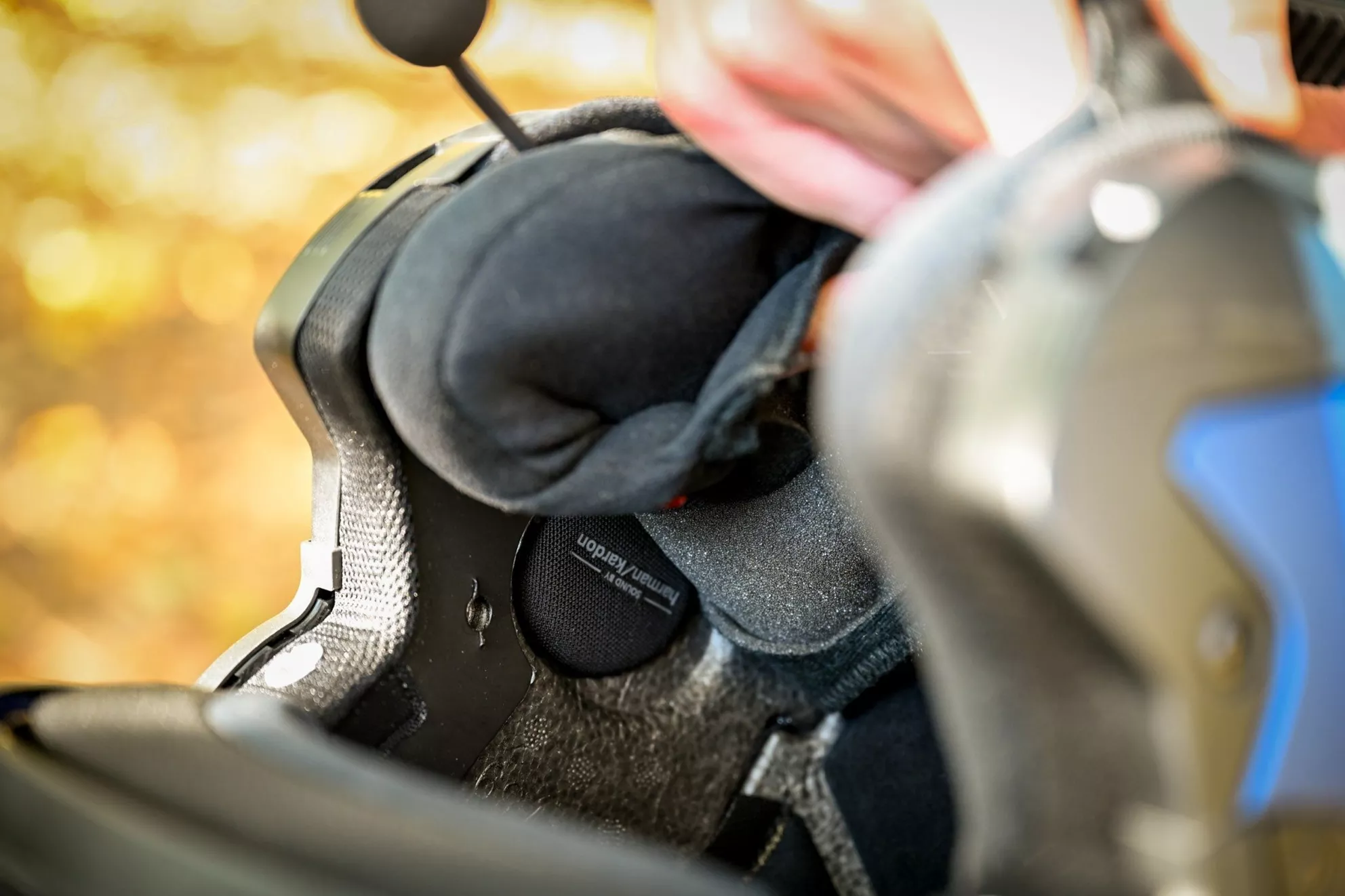
Conveniently, if you've already found your preferred helmet headphones, the 60S can also be used with a 3.5 mm jack. This connectivity option broadens the scope for custom setups and is an uncommon feature in this class of devices.
Group Communication & AI Noise Cancellation in the SENA 60S – Great Potential with Clear Weaknesses
Artificial intelligence is a hot topic right now, and it's set to play a central role in the SENA 60S as well. The AI-driven algorithm in the system is tasked with separating disruptive background noises like wind and engine sounds from the human voice, optimizing it, and then transmitting it as clearly as possible—both for voice commands and intercom communication. An interesting concept in itself.
SENA takes a different approach than many competitors by deliberately avoiding highly directional microphones. Instead, the microphone is centrally located in the barrel—the end piece of the microphone—and the AI is supposed to handle the rest. While clever in theory, in practice, this reveals one of the biggest weaknesses of the 60S.

As long as the wind noise is manageable, everything works fine. However, the wind rush at Austrian highway speeds confuses the AI. That's a real shame!
The noise cancellation isn't currently reliable. The main issue is wind noise. Up to about 80 km/h, the voice quality over the Mesh intercom is still good—beyond that, the AI increasingly filters out parts of the voice. At around 130 km/h, only a robotic buzz is heard by the conversation partner. Simply placing a hand on the underside of the helmet instantly improves clarity, clearly indicating the source of the problem.

Our layman's guess: One reason for the noise cancellation issue could be the microphone. It is not directed towards the mouth but aims towards the boom mic, which is off to the left in the image.
For a system in this price range, such a weakness is significant. Clear communication at higher speeds is a basic requirement for a modern motorcycle intercom, and currently, the 60S falls short in this area. Additionally, the inability to disable or adjust the strength of the AI algorithm further limits the user's options.
The only silver lining: the system supports over-the-air updates, allowing future software improvements to be installed wirelessly. Hopefully, SENA will make targeted improvements here, as the rest of the hardware provides an excellent foundation for strong transmission quality.
Mesh 3.0 in the SENA 60S – Range, Stability, and New Features
As long as the sound quality allows for clear communication, the technology has definite potential. Compared to Mesh 2.0, Mesh 3.0 offers several improvements focused on greater stability, enhanced voice quality, and optimized range. A key feature is backward compatibility: Mesh 3.0 remains fully compatible with all existing SENA devices that support Mesh 2.0. However, new is the reduction of the frequency range to just six channels, which decreases the likelihood of data collisions, resulting in clearer conversation quality in practice. The system automatically checks if a frequency is free before sending a signal—the resulting minimal delay is technically present but hardly noticeable during riding.
Also of interest: The AI-powered noise detection currently operates exclusively in Mesh 3.0 mode. It differentiates between speech and noise, aiming to contribute to clearer communication—though, as mentioned earlier, it doesn't always work reliably in practice. According to SENA, they plan to extend this feature to older Mesh versions in the future.
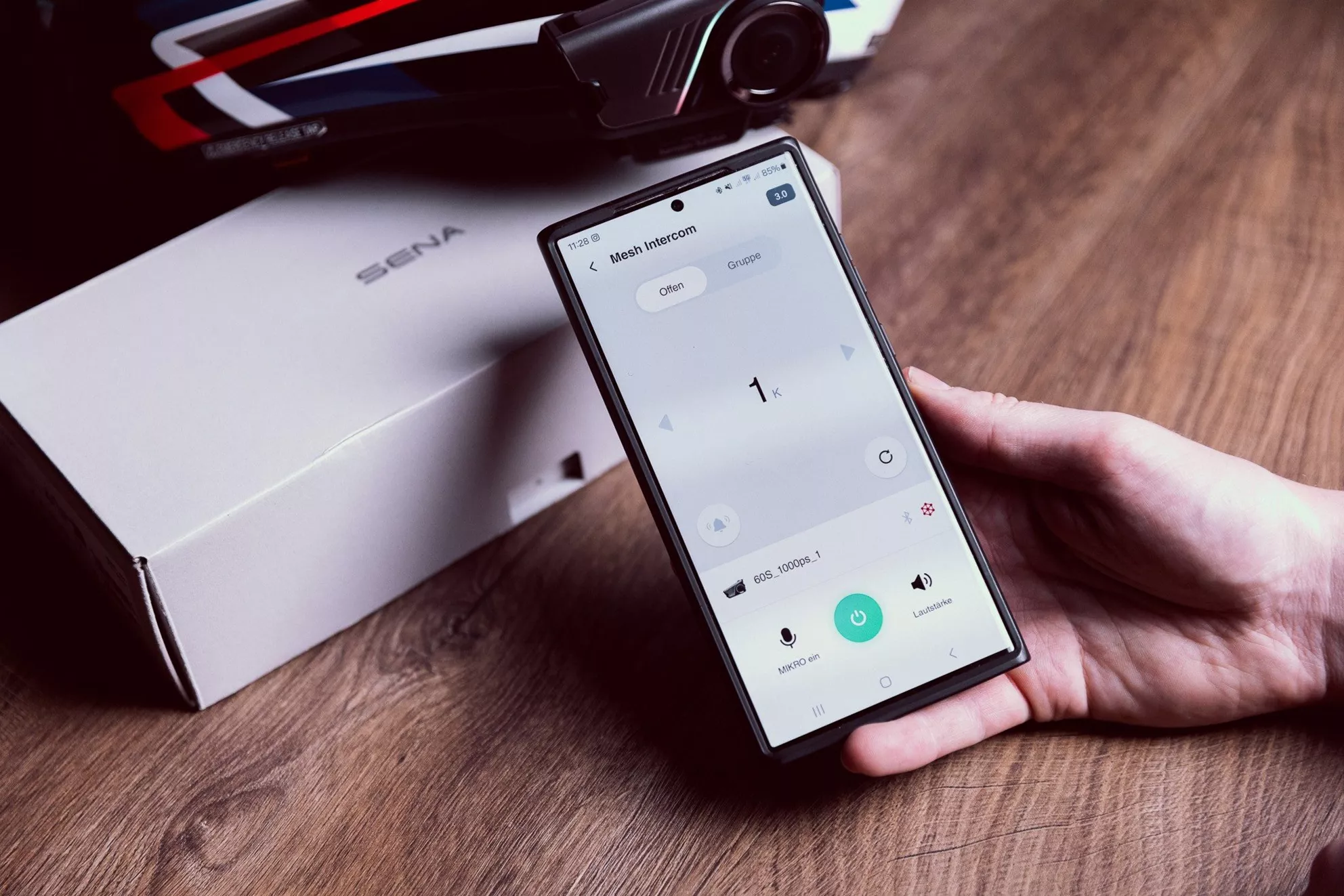
Mesh 3.0 now offers both public and private group channels with up to 24 participants. A major advantage: Group pairing via QR code.
In terms of range, the 60S benefits from an additional antenna. According to the manufacturer, this results in an improvement of 25–30% over the 50S. In optimal conditions—meaning clear line of sight—ranges of up to 2 km in private mode are possible. When six or more riders are spaced about 1.6 km apart, the range can theoretically extend to up to 8 km. In practice, rock walls, mountain slopes, or buildings limit the range much earlier, but this generally doesn't have a significant negative impact. Typically, during a group ride, you remain relatively close, and the connection holds for several hundred meters. If it drops, it reconnects quickly at the first opportunity. However, even Mesh 3.0 isn't completely immune to interference. Especially in urban environments with thousands of WiFi, Bluetooth, radio, and TV signals, quality can degrade as SENA signals struggle through the frequency jungle. Even modern systems face physical limits here. Nonetheless, the 60S remains within an acceptable, still quite usable range.
The Mesh system distinguishes between a public and a private mode. In public mode, you can communicate across nine channels with virtually unlimited participants. In private mode, the group is limited to 24 participants, making it particularly suitable for structured tours with a fixed participant group.
Wave Intercom Tested – Unlimited Communication with the SENA 60S
With the new Wave Intercom technology, SENA introduces an additional communication option in the 60S that operates over the cellular network. Essentially, it's a VoIP connection—a type of voice call over the internet, similar to WhatsApp calls. In everyday use, it behaves just like that: as long as the internet connection is stable, communication is clear, straightforward, and reliable.
Particularly handy: the accompanying Wave Intercom app includes a live location tracking feature. This allows you to see in real-time where the other group members are, which is especially helpful when organizing group rides and waiting for individual riders to arrive.
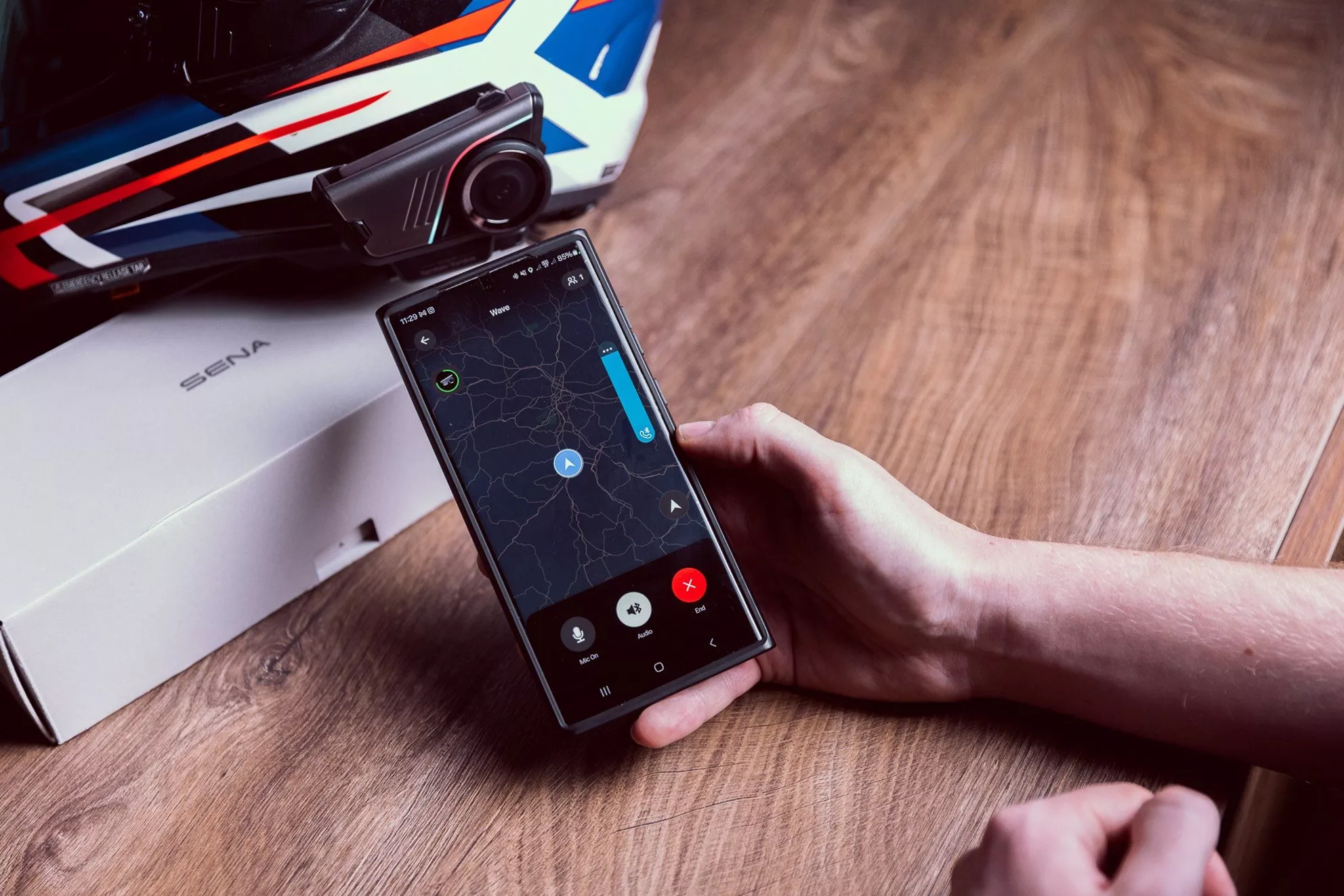
Wave Intercom is an exciting idea and a great addition to the other communication technologies. It's very practical when the group of friends is just gathering. If the automatic switch to Mesh works, it will be a real highlight.
As expected, Wave communication reaches its natural limits in remote or mountainous regions. Without a stable mobile network connection, a consistent connection is simply not possible—this is logical and technically hard to avoid.
However, it's less understandable that the automatic switch from Wave Intercom to Mesh Intercom, as advertised by SENA, did not work in practice. According to the manufacturer, the system should automatically switch to Mesh mode if other devices are within range when the connection is lost. Despite multiple attempts, this switching function could not be replicated in the test. This is disappointing, as this seamless transition should be one of the greatest advantages of the hybrid system.
Bluetooth 5.3 in the SENA 60S – More Efficient and Reliable Than Its Predecessor
Compared to the previous model, the 50S, the SENA 60S utilizes the newer Bluetooth 5.3 standard. This brings several technical improvements over Bluetooth 5.0, particularly affecting efficiency, connection stability, and energy consumption.
A key feature is the so-called channel classification. It enables the system to actively avoid overloaded radio channels, reducing interference and increasing connection reliability—especially relevant when using multiple Bluetooth devices like a smartphone and a GPS simultaneously.
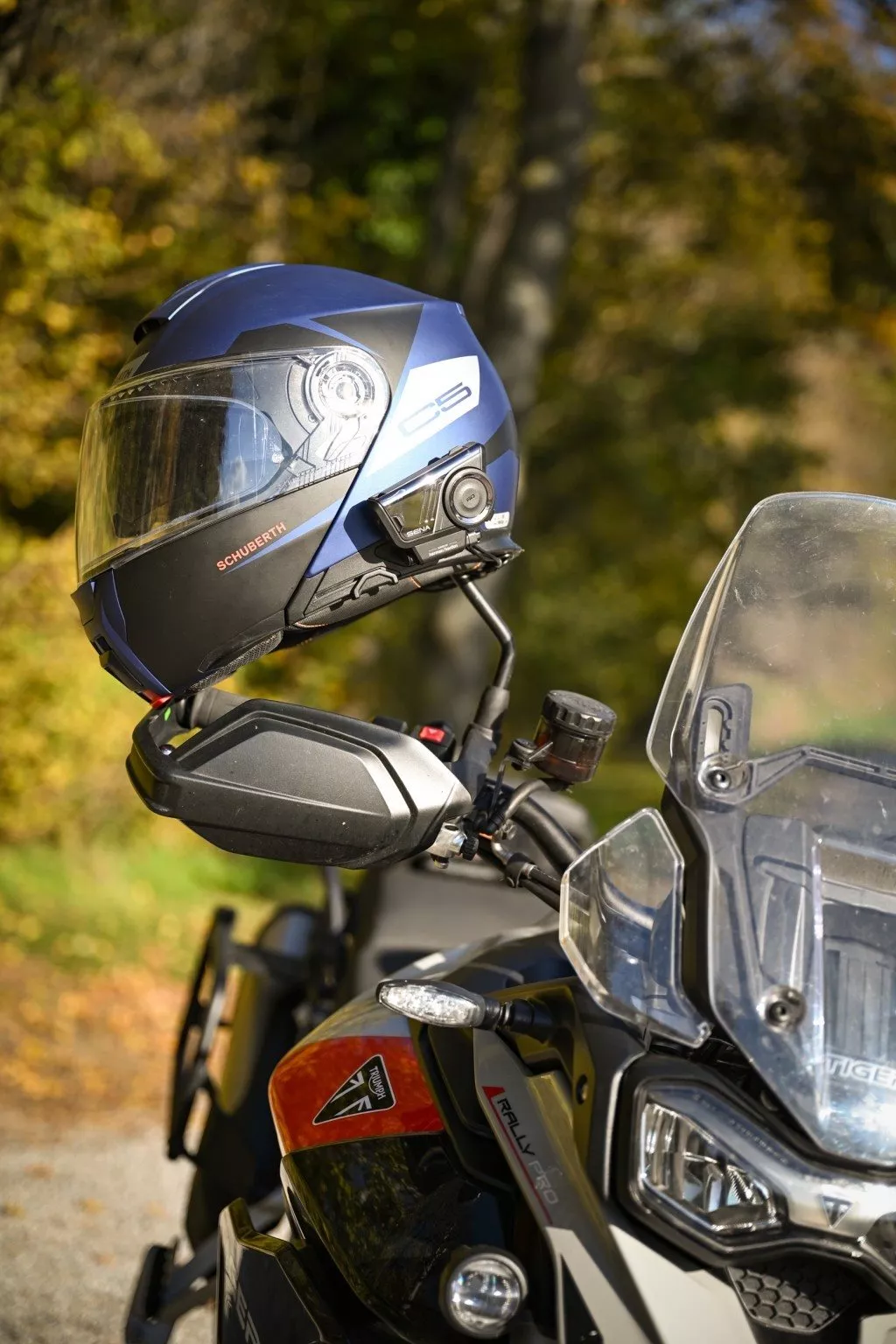
Motorcycle, GPS, or passenger—Bluetooth connections are ubiquitous. With Bluetooth 5.3, they perform even better.
The connection underrating feature also ensures lower energy consumption by allowing devices to switch to standby mode more quickly when inactive and to reactivate without delay when needed. This particularly improves the battery life of connected devices.
Additionally, Bluetooth 5.3 optimizes the so-called Attribute Protocol (ATT), which is responsible for the exchange of control information. This results in faster system responsiveness, such as when switching between audio sources or using voice assistants.
In practice, Bluetooth on the 60S usually remains a secondary feature alongside Mesh and Wave Intercom. However, the technical improvements over the 50S are present and sensible—especially for users who like to pair their system with multiple devices simultaneously.
SENA 60S Test Conclusion: Promising, But Needs Significant Improvement
Overall, the SENA 60S is a successful advancement in many areas. The build quality appears high-end, the tactile feedback of the controls is well-designed, and the sound—especially for solo use—is impressive in both volume and clarity. The battery life is also solid, lasting up to 17 hours in Mesh mode and 22 hours with Bluetooth usage. Thanks to USB-C and fast charging, the device can be fully charged in just 1.5 hours—20 minutes is enough for over three hours of Mesh communication.

SENA delivers a very interesting package with the 60S. However, given the current issues, it's worth waiting a bit before making a purchase.
Despite all these positive aspects, the 60S cannot be fully recommended in its current state. The key innovation, AI-powered noise cancellation, is particularly disappointing in tests. From around 80 km/h, the intelligibility in group communication noticeably decreases—at higher speeds, the voice is sometimes filtered so much that barely anything is understandable. A communication system priced at €399 MSRP cannot afford such a major flaw in 2025.
Currently, the SENA 60S is best suited for solo riders who primarily want to use the device for listening to music and desire the best possible sound. However, those planning regular group communication should postpone purchasing—at least until SENA has made improvements via a software update.
SENA 60S Review: The Latest Helmet Communication System Test Images
Source: 1000PS





























































